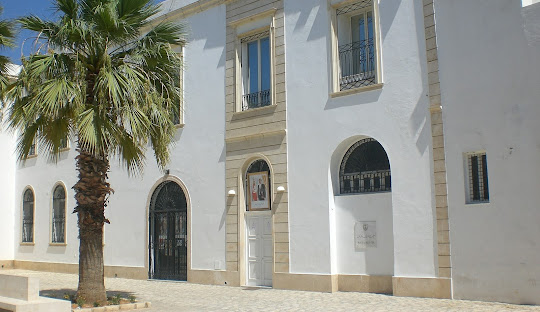Medina of Tunis, Tunisia
🕌 Medina of Tunis: The Heart of Tunisia’s Capital
Tucked away in the bustling capital of Tunisia lies one of North Africa’s most fascinating historical treasures — the Medina of Tunis. A maze of narrow alleys, ancient mosques, vibrant souks, and stunning palaces, the Medina is not only a UNESCO World Heritage Site but also the spiritual, cultural, and historical heart of Tunis.
Dating back over 1,000 years, the Medina is where Tunisia’s rich history of Arab, Ottoman, and French influence beautifully converges. Whether you're here for the food, the architecture, or to experience the atmosphere of centuries past, the Medina offers an unforgettable journey through time.
🏰 A Walk Through History: The Medina’s Layers
The Medina of Tunis is a living testament to the past, and every corner tells a story. It was originally founded during the Aghlabid dynasty in the 9th century, but the Fatimids and Ottomans later added their own architectural touch. Walking through the Medina is like stepping back in time to an era of bustling trade, imperial power, and cultural flourishing.
The Medina is divided into several districts, each with its own distinct character:
-
Souk El Attarine (spices and perfumes)
-
Souk El Berka (fine clothing and jewelry)
-
Souk El Nouahdja (leather goods)
-
Souk El Sef (textiles and carpets)
Each souk offers a vibrant atmosphere where local artisans still practice their crafts, from weaving carpets to making silver jewelry, offering travelers a chance to connect with Tunisia’s rich artisanal heritage.
🕌 Key Historical Landmarks
🏛️ The Zitouna Mosque
At the heart of the Medina lies the Zitouna Mosque, the largest and oldest mosque in Tunis. Built in the 9th century, it’s an architectural masterpiece, with a stunning courtyard, intricately decorated arches, and a majestic prayer hall. While non-Muslims cannot enter the prayer areas, the mosque’s exterior, with its grand minaret, is a sight to behold.
The mosque also serves as an intellectual center, with its medressa (Islamic school) once attracting scholars from across the Muslim world. Don’t miss its serene courtyard, often filled with the sound of call to prayer echoing through the city’s streets.
🏰 Dar Ben Abdallah Museum
For those interested in Tunisia’s domestic life, Dar Ben Abdallah offers a glimpse into the luxurious homes of the wealthy during the Ottoman period. The museum showcases a wealth of artifacts, including furniture, traditional clothes, and silverware, all housed in a beautifully restored Ottoman residence.
🕌 Medina’s Gates
The Medina’s gates, like Bab el Bhar and Bab Khadra, offer an imposing glimpse into the city’s past. They are reminders of the fortified walls built by various dynasties to protect the city from invasions. Walk through these monumental gates and feel transported to a different time when they were the entry points to the heart of Tunis.
🛍️ Shopping in the Souks: The Ultimate Market Experience
One of the best ways to experience the Medina is by wandering through its souks — a labyrinth of market stalls where you can find anything from spices and herbs to handmade leather bags and brass lamps. The souks are an explosion of colors, scents, and sounds that make them a sensory delight for visitors.
👜 Handicrafts & Souvenirs
If you’re looking for unique souvenirs, the Medina is the place to be. Local artisans create intricate Tunisian carpets, pottery, and ceramics. Be sure to haggle — bargaining is part of the experience.
🍂 Spices & Perfumes
The Medina’s spice market, particularly Souk El Attarine, is a feast for the senses. The air is thick with the aromas of saffron, cumin, coriander, and dried rose petals. Tunisian perfumes, often crafted from natural ingredients like jasmine and orange blossom, are also a great buy.
🍽️ Taste the Flavors of Tunisia: Food & Dining
The Medina is home to some of the best traditional Tunisian food. From street food vendors to cozy restaurants, you’ll find a variety of delicious options:
-
Brik: A crispy pastry stuffed with egg, tuna, and capers, often served as an appetizer.
-
Couscous: The national dish, served with lamb, chicken, or fish, and accompanied by a spicy tomato sauce.
-
Tunisian Pastries: Baklava, makroud, and Zrir are sweet treats made from honey, almonds, and sesame.
For a more authentic experience, head to one of the local cafés in the Medina for a cup of mint tea paired with pastries while watching the world go by.
🚶♂️ Getting Around the Medina: Walk and Explore
The best way to experience the Medina is on foot. The narrow, winding streets are often too narrow for cars, creating a pedestrian-only paradise. Be prepared to get lost in the maze — but that’s part of the charm. Every turn reveals something new, from the hidden courtyards of old houses to unusual street vendors selling handmade goods.
-
Opening Hours: The Medina is open year-round. Most shops and souks open around 9 AM and close by sunset.
-
Guides: It’s advisable to hire a local guide, especially if you’re interested in the deep history of the area. Many guides are available at the gates.
🧳 Travel Tips for Visiting the Medina
-
Dress Modestly: Tunisia is a Muslim-majority country, and it’s respectful to dress modestly, especially when visiting religious sites.
-
Beware of Pickpockets: As in any crowded market area, be mindful of your belongings.
-
Currency: Tunisia uses the Tunisian dinar (TND), and cash is preferred in the souks. ATMs are available in the Medina and nearby areas.
🌟 Why the Medina of Tunis Should Be on Your Bucket List
For travelers looking to immerse themselves in Tunisia’s rich heritage, the Medina of Tunis is an unmissable destination. Its historical significance, unique atmosphere, and vibrant culture make it a must-visit. Whether you’re exploring ancient mosques, haggling in the souks, or simply soaking in the sights and sounds of everyday life, the Medina offers a powerful and authentic experience.


